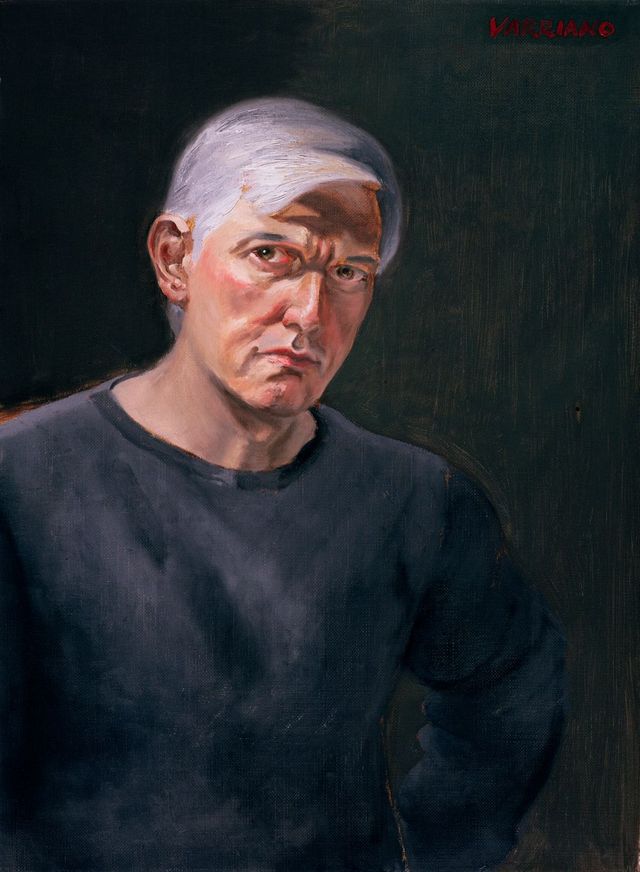Discover the most effective Tips for Creating Stunning Figurative Oil Painting Artwork
Discover the most effective Tips for Creating Stunning Figurative Oil Painting Artwork
Blog Article
The Duty of Feeling and Expression in Metaphorical Oil Paint: An In-Depth Analysis of Subject and Composition
The interplay of feeling and expression in figurative oil paint offers as a vital lens through which one can take a look at the detailed relationship between subject matter and composition. Artists harness various methods, from shade choice to brushstroke characteristics, to cultivate psychological vibration within their works.
Recognizing Feeling in Art
Feeling in art works as an effective conduit for expression, allowing artists to communicate intricate feelings with their job. In figurative oil painting, this psychological deepness is frequently represented through the representation of the human number, recording the subtleties of human experience. The option of subject issue, color combination, and brushwork all add to the psychological vibration of a piece.
Artists frequently draw upon individual experiences, social concerns, or global themes to evoke feelings in the visitor. For instance, a portrait may show susceptability, while a vibrant number in activity can symbolize freedom or turmoil. These emotional strings link the visitor to the artwork, promoting a dialogue that goes beyond the visual tool.
Moreover, the interplay between light and shadow can magnify psychological strength, assisting the customer's look and accentuating specific aspects within the composition. Using appearance in oil painting even more adds layers of complexity, welcoming a responsive feedback that improves the emotional experience. In general, understanding emotion in art is vital for appreciating the subtleties that identify metaphorical oil painting, as it transforms plain depiction into a profound expedition of the human problem.
Secret Elements of Composition
In the world of metaphorical oil painting, the structure offers as the underlying framework that organizes aesthetic components and improves the emotional story. Crucial parts of structure include balance, comparison, prime focus, and rhythm, each adding to the total impact of the art work.
Balance refers to the distribution of visual weight within the painting, which can be accomplished with in proportion or asymmetrical plans. A well-balanced make-up gives stability, allowing the customer to engage with the item harmoniously - figurative oil painting. Contrast, on the other hand, includes juxtaposing various aspects, such as light and dark or warm and awesome shades, to direct the visitor's eye and stimulate emotional actions
The focal point is critical, as it guides attention to the most substantial part of the paint, usually highlighting the psychological core of the narrative. By skillfully incorporating these key components, artists can craft emotionally powerful and compelling metaphorical oil paints that astound and engage their target market.
Subject Issue and Its Influence
Subject matter plays a crucial role in metaphorical oil painting, as it not just acts as the foundation for the narrative yet additionally forms the visitor's analysis and psychological interaction with the artwork. The option of subject matter-- be it a singular number, a group dynamic, or a thematic depiction-- straight affects the emotional ambience conveyed to the audience.

For circumstances, pictures typically evoke personal links, revealing the intricacies of human expression and character, while scenes portraying common tasks can create a sense of belonging or fond memories. In addition, the cultural and historic context of the subject improves the viewer's understanding, triggering deeper reflections on social norms, values, and the human problem.
Different topics additionally generate varying levels of involvement; a remarkable problem shown via figures in stress might elicit click to read more sensations of anxiousness or empathy, while calm landscapes can invoke tranquility and reflection. Eventually, the effect of subject issue in metaphorical oil paint is extensive, as it acts as a conduit for emotional resonance, leading the visitor's reaction and interpretation, and cultivating a link between the artwork and the onlooker. This interaction is important for the successful interaction of the artist's intent.
Strategies for Stimulating Feelings
The performance of figurative oil painting in conveying feelings is substantially affected by the techniques utilized by the musician. Among the most crucial methods is making use of color concept, where the calculated selection of shades can stimulate specific emotional actions. Cozy shades, such as oranges and reds, commonly generate sensations of passion or aggressiveness, while cooler tones like blues and eco-friendlies have a tendency to stimulate peace or sadness.
One more necessary technique is the adjustment of light and darkness, understood as chiaroscuro. This method boosts the three-dimensionality of figures, developing remarkable contrasts that can heighten psychological deepness. The placement of light can lead audiences' emotions, highlighting particular components of the composition.
Brushwork likewise plays an essential duty; loose, meaningful strokes can convey energy and spontaneity, whereas smoother strategies may suggest harmony or accuracy. The plan of topics within the make-up can influence psychological effect. Close proximity can suggest intimacy, while range might show isolation.
Ultimately, the combination of you could try these out these techniques makes it possible for artists to craft stories that reverberate with the customer, changing a plain aesthetic experience right into an evocative emotional journey. - figurative oil painting

Instance Research Studies of Noteworthy Works
Analyzing noteworthy jobs of figurative oil painting discloses exactly how different methods are utilized to stimulate effective feelings. One excellent situation is Edvard Munch's "The Scream," where the distorted figure and swirling background communicate existential dread. Munch's usage of color-- vivid oranges and deep blues-- intensifies the emotional influence, showcasing how palette choices can shape customer experience.
An additional substantial job is Pablo Picasso's "Les Demoiselles d'Avignon." Here, fragmented kinds and vibrant brushstrokes reflect a tumultuous psychological landscape, testing traditional depictions of the women figure. Picasso's cutting-edge structure not only captures the visitor's attention yet additionally invites reflection on motifs of identification and sexuality.
Furthermore, Frida Kahlo's "The 2 Fridas" offers a touching expedition of duality and self-identity. The different figures, connected by a shared heart, exhibit Kahlo's psychological depth and personal narrative. figurative oil painting. Her meticulous attention to information and symbolic elements serve to engage visitors on a natural level
These situation research studies emphasize the profound link in between emotion and make-up in figurative oil paint, disclosing exactly how musicians harness technique to communicate complex sensations and narratives that reverberate throughout time and society.

Conclusion
In final thought, the interaction of emotion and expression in figurative oil paint considerably boosts the audience's experience and interpretation of the artwork. Through a look at here now careful choice of topic and compositional methods, artists communicate profound narratives that resonate on both personal and universal levels. The application of shade chiaroscuro, concept, and brushwork additional magnifies emotional depth, changing each canvas into an effective reflection of the complexities of the human experience.
In figurative oil painting, this psychological deepness is frequently portrayed via the depiction of the human figure, recording the subtleties of human experience.Moreover, the interaction between light and darkness can magnify psychological intensity, leading the audience's look and drawing interest to particular components within the structure. The use of structure in oil painting further adds layers of intricacy, inviting a responsive reaction that boosts the psychological experience.The focal factor is essential, as it directs attention to the most significant component of the paint, often highlighting the psychological core of the narrative. Ultimately, the impact of subject matter in metaphorical oil paint is profound, as it serves as a conduit for emotional vibration, leading the viewer's action and analysis, and promoting a link in between the art work and the observer.
Report this page